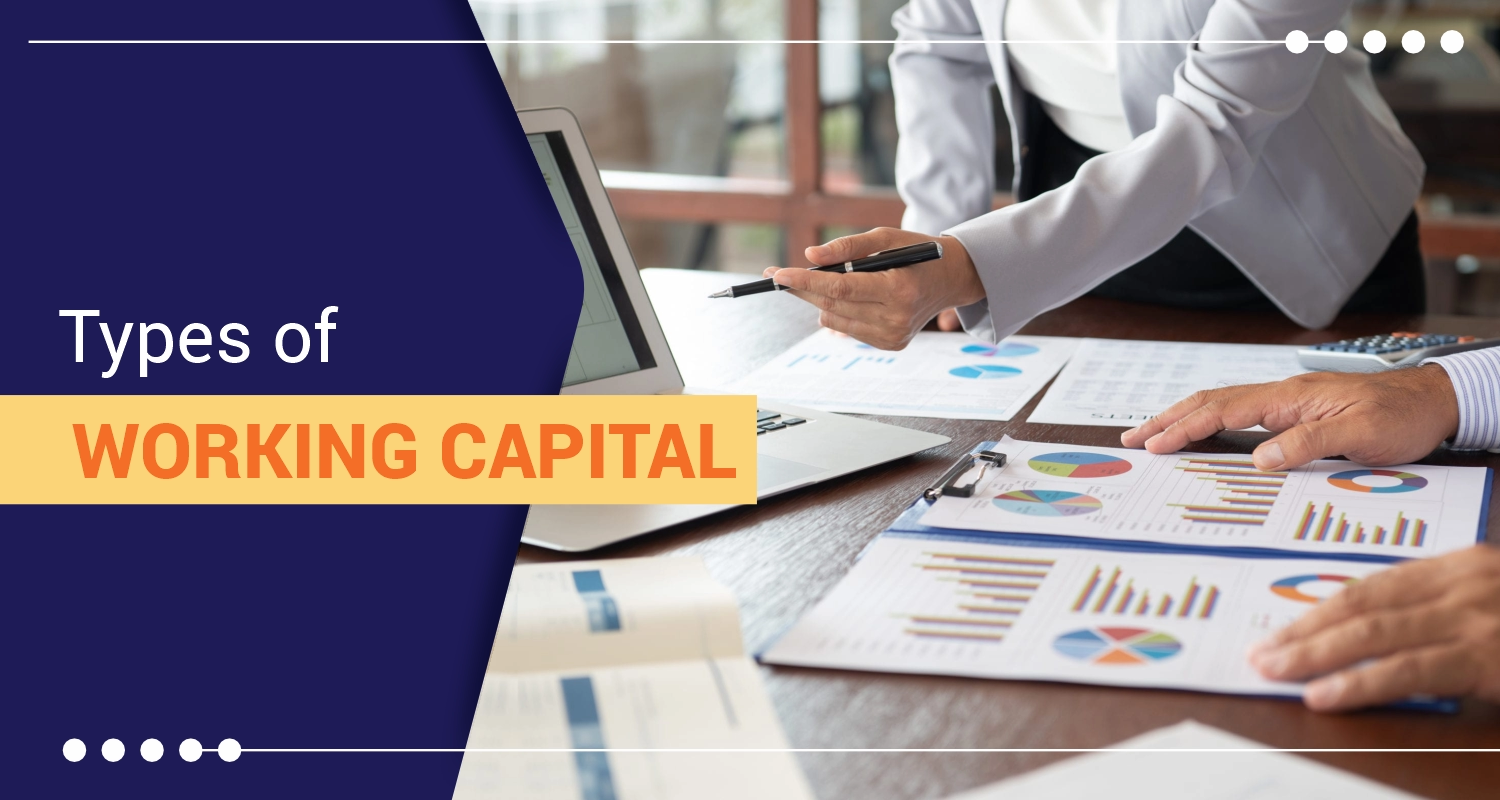Types of Working Capital

While running a business, one of the most crucial factors to ensure the smooth functioning of daily operations is working capital. It helps to fulfill short-term obligations as well as efficiently manage operations. However, working capital is not a one-size-fits-all model. It can vary from one business to another. So, to better understand how businesses can allocate and manage these resources, one should know about the different types of working capital.
Each type serves a unique purpose and reflects varying needs based on the size, nature, and cycle of the business. Broadly, the types of working capital can be classified based on time (such as permanent and temporary working capital) and purpose (such as gross and net working capital). Understanding the different types of working capital is essential not only for efficient cash flow management but also for sustaining long-term growth and stability.
Different Types of Working Capital
Understanding the different types of working capital can help you manage cash flow better, prepare for business cycles, and stay financially healthy. Let’s find out what the types of working capital are that exist and which one aligns with your business needs:
1. Permanent Working Capital
Also referred to as fixed working capital, it is the minimum amount of capital a business must have to function smoothly. It’s used for essential operations like paying salaries, managing inventory, and keeping utilities running.
2. Temporary Working Capital
As the name suggests, it is required to manage short-term financial spikes, which can arise due to several reasons such as seasonal demands, special projects, or sudden bulk orders. It varies depending on business activity and is not a year-round necessity.
3. Gross Working Capital
Gross working capital includes the total value of all current assets—like cash, receivables, short-term investments, and inventory. It gives an overview of the company’s liquidity position.
Sapna aapka. Business Loan Humara.
Apply Now4. Net Working Capital
The calculation for this type is based on subtracting current liabilities from current assets. A positive net working capital indicates that a business can easily meet its short-term obligations. On the other hand, a negative indicates financial stress.
5. Initial Working Capital
Startups and new businesses require initial working capital to get off the ground. This includes funds for hiring, purchasing raw materials, renting premises, and other foundational expenses.
6. Reserve Working Capital
This type of capital can be considered as a contingency fund. It’s kept aside to deal with unexpected scenarios. It could range from sudden drop in sales, delays in payments, supply chain disruptions or even a natural calamity.
7. Regular Working Capital
This covers the day-to-day operational costs that recur regularly. These include bills, maintenance costs, routine transportation, and administrative expenses.
8. Variable Working Capital
This fluctuates based on the volume of business activity. During high-demand seasons, a business may need extra working capital to handle increased orders, production, or staffing.
Conclusion
Understanding the different types of working capital is key to maintaining financial stability, planning efficiently, and scaling operations at the right time. Whether you're running a small startup or a growing enterprise, identifying which type applies to your current situation can lead to smarter financial decisions and sustainable growth.
FAQs
1. What are the different types of working capital?
Ans. The different types of working capital include permanent, temporary, gross, net, initial, reserve, regular, and variable working capital. Some cover daily operations while others take care of seasonal needs or emergencies. Simply put these different types of working capital help businesses maintain smooth operations and stay financially prepared across different scenarios.
2. Why is understanding types of working capital important for businesses?
Ans. Knowing the different types of working capital helps businesses in allocating funds wisely, so that short-term obligations can be met and the business is better equipped for fluctuations. It also improves cash flow planning, ensures operational continuity, and reduces financial risks, especially during peak seasons or unexpected disruptions. All this, in turn, contributes to more informed decision-making and long-term sustainability.
3. How does permanent working capital differ from temporary working capital?
Ans. Permanent working capital is the constant minimum fund needed for everyday operations. However temporary working capital addresses short-term or seasonal spikes in business activity. The former remains stable year-round, whereas the latter fluctuates based on varying needs such as sales cycles, special projects, or one-time inventory demands.
4. Can fluctuating working capital affect a company's financial stability?
Ans. Yes, significant fluctuations in working capital can impact a company's financial health. Inconsistent cash flow, overstocking, or delayed receivables may strain operations or lead to liquidity issues. Managing variable and temporary capital efficiently is crucial to avoid disruptions and maintain business stability during changing market conditions.
Sapna aapka. Business Loan Humara.
Apply NowDisclaimer : The information in this blog is for general purposes only and may change without notice. It does not constitute legal, tax, or financial advice. Readers should seek professional guidance and make decisions at their own discretion. IIFL Finance is not liable for any reliance on this content. Read more



